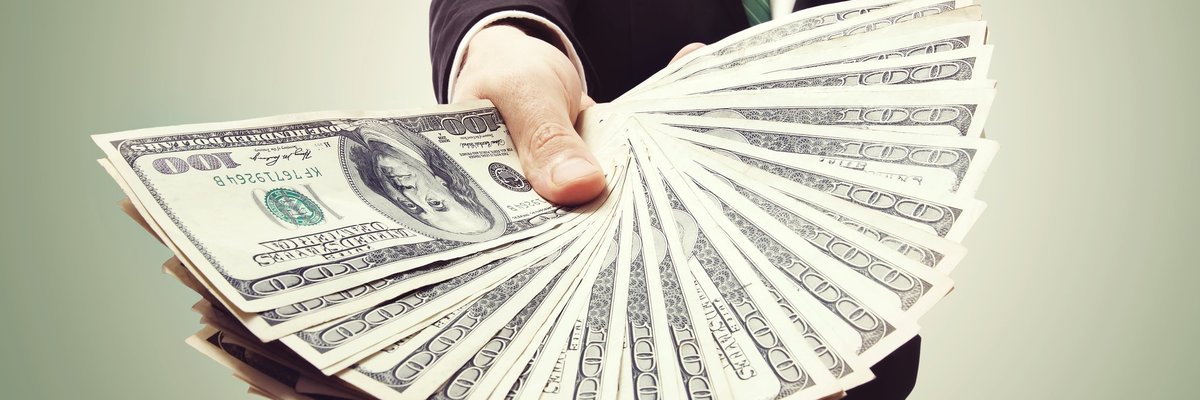3 Reasons to Open a High-Yield Savings Account Immediately
As the name implies, a high-yield savings account pays you more. But that's not all.
Ever since the financial crisis and subsequent low-interest environment, savings accounts acquired an awful reputation. This certainly makes sense -- many bank savings accounts have been paying interest rates of just 0.01% and continue to do so although market interest rates for virtually every other financial product have increased in recent years.
However, online-based savings accounts have become much more popular, and for good reason. Because of their lower-cost business model of having no physical branches, online banks can pass some of their savings on to the customer in the form of higher interest rates, lower fees, and some pretty nice features. Here's a rundown of why you might want to switch to a high-yield savings account right now.
1. Higher yield
This is perhaps the best and most obvious reason to open a high-yield savings account. According to the FDIC, the U.S. average savings account yield is a paltry 0.38%.
Meanwhile, some of the best online savings accounts (note: The highest-yielding savings accounts are generally offered by online-based banking institutions) pay upward of 2%. For example, one of the highest-yielding savings accounts offers a 4.01% APY as of January 10, 2025 -- that's 10X the national average.
Here's why this matters so much. Let's say that you maintain a $10,000 savings account to cover unforeseen expenses and such. In an average-yielding savings account, you can expect your account balance to rise to about $10,230 after five years. With a 4% yield, you'd have $12,166 after the same time period. That's an additional $1,936 just for moving your savings to another FDIC-insured savings account.
2. Lower fees
In addition to paying more, high-yield savings accounts often charge fewer fees than traditional savings accounts, and in some cases, none at all. With many online-based high-yield savings accounts, there are no service charges or transaction fees for transferring money, nor is there a monthly service fee. Some don't even charge customers a fee for sending a wire transfer.
There are several excellent options if you're looking for low fees in addition to a high APY. So, take a look at the best online savings accounts and compare the current rate and fee structures, as well as the features of each, to see which might be the best choice for you.
3. ATM access can be better than a traditional bank
Here's one that really surprised me when I first signed up for a high-yield savings account online. I was worried that it would be difficult to access my money, and that I'd have to pay a fee every time I wanted to make a withdrawal.
Just to be clear, online-based savings accounts have the same general rules when it comes to withdrawal frequency that traditional savings accounts do. You're generally allowed up to six withdrawals per month -- after all, it's a savings account, not a checking account.
However, there are some online savings accounts that not only allow you to use any ATM without charging you a fee, but will also reimburse you for any fees charged by the ATM you choose. To be sure, the majority of high-yield savings accounts don't offer this, but some do -- you just need to look. Even some that don't offer reimbursement offer broad networks of ATMs that are completely free to use.
My savings account doesn't pay the absolute tip-top interest rates, but it does offer ATM fee reimbursement, which I've found to be a convenient and valuable perk. I even tested this out in Las Vegas last year, where ATMs charge $9.99 fees. Sure enough, this huge ATM fee showed up as a credit in my account the next day!
The bottom line is that online high-yield savings accounts may not be as inconvenient as you may think, and the higher yield and lower fees can result in significant savings. If you're still keeping your rainy day cash in a traditional savings account earning next to nothing, you owe it to yourself to take a closer look at the high-yield alternative.
Our Research Expert
We're firm believers in the Golden Rule, which is why editorial opinions are ours alone and have not been previously reviewed, approved, or endorsed by included advertisers. Motley Fool Money does not cover all offers on the market. Motley Fool Money is 100% owned and operated by The Motley Fool. Our knowledgeable team of personal finance editors and analysts are employed by The Motley Fool and held to the same set of publishing standards and editorial integrity while maintaining professional separation from the analysts and editors on other Motley Fool brands. Terms may apply to offers listed on this page. APYs are subject to change at any time without notice.



